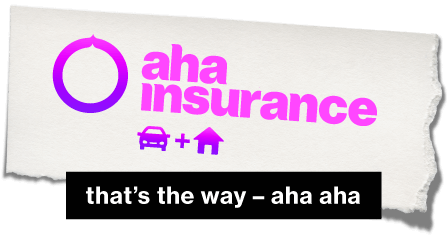How to save on insurance premiums?
It’s important to know how to save on insurance premiums, and smart drivers understand that auto insurance is more than something that’s required by law. It’s also a key component of you and your family’s well-being. In the event of an accident, auto insurance provides coverage to cover extra health costs, pays some income replacement if you can’t work following an accident and of course, it pays to repair or replace your vehicle.
That doesn’t mean that you have to pay an arm and a leg for proper coverage, saving on car insurance is quite easy with a bit of understanding. In this article, we’re going to explore different ways that you can reduce your premium while still protecting your family and yourself.
Frequently asked questions
What is the best way to reduce insurance premiums?
There are many ways you can reduce your auto insurance premium relatively easily. Some of these relate to the many credits car insurance companies offer drivers who qualify, while other savings can be had by improving some of the rating factors that determine your premium. Here are a few of the most common discounts available.
Driver training credit
If you’re a new driver, one of the best ways to reduce your car insurance premium is to take a driver training course from a company that’s recognized by your provincial government. These defensive driving courses will save you money. New drivers can save as much as 10% on their premium for successfully completing a training course.
Multi-policy discount
One discount that is often overlooked by insurance buyers is the multi-policy discount, you can easily save on your insurance premiums while making things more convenient for yourself. If you have your car insurance, home insurance, and any other insurance you maintain all with the same insurance company, you will be eligible for this group discount. You can save up to 10% on your auto insurance premium and up to a whopping 50% discount on your home and other policies by bundling them together.
Claims free discount
If you have not filed any auto insurance claims for the past five years, you may be eligible for a significant claims-free discount. This discount and the rules to qualify for it are different at each insurance company, so be sure to ask your insurance professional for details.
Deductibles
The size of your insurance deductible directly relates to the amount you pay for insurance; the higher your deductible, the less you will pay. So, if you’re someone who probably wouldn’t report small claims to your insurer, or you own a vehicle that doesn’t get much use, increasing your deductible is one way to bring down your car insurance costs. Understanding how your deductible affects what you pay is an important step toward understanding how you can save on your insurance premiums.
Usage-based insurance
Usage-based insurance allows good drivers to save up to 30% off their premium if they drive safely. It works by installing a device on your vehicle or downloading an app to your smartphone. The device or app tracks your driving habits over the course of your policy.
If you drive safely, stay within posted speed limits and avoid bad habits, you’ll receive a credit on your insurance which ensures good driving is always rewarded. Be forewarned though, some insurers may charge you more if you don’t drive safely.
For more information on discounts and credits available in Ontario, read our article: Car insurance discounts in Ontario.
What factors are used to determine the cost of insurance premiums?
There’s no doubt that calculating car insurance premiums are complex. But one thing to remember is that all the rating factors come back to one thing: risk.
The higher the risk an insurance company is taking on, the more expensive your insurance will be. Similarly, those who pose less risk will pay less for their car insurance. Let’s take a look at some of the largest drivers of your insurance premium and how they are associated with risk.
There are two buckets of information used to calculate your premium, your vehicle, and who drives it.
The vehicle
Make, model year – It should be no surprise that more expensive cars cost more to repair or replace than less expensive cars. What your car is worth affects your premium, your insurance company looks at how much they will have to pay to repair or replace your vehicle and uses that to determine the risk they will be insuring. Knowing how to save on your insurance premiums is knowing how your vehicle affects the cost, and how you can change it.
Location – Location plays a big part in calculating your car insurance premium. People who live in cities are more likely to be involved in accidents than those who live in more rural areas. Similarly, vehicle thefts might be much more common in some areas than others. The different risks posed in different areas are used to determine how much you will be charged.
Usage – How you use the vehicle is also important when calculating your premium. A vehicle that’s used to commute 10 km to and from work each day poses a higher risk than a vehicle owned by someone who works from home and only uses the car to run errands and grocery shop. Mileage discounts are often available for vehicles with low use. The more you drive the vehicle, the more you will pay for insurance.
The drivers
Age/experience of drivers – It’s an unwelcome truth that young and inexperienced drivers are involved in accidents much more often than older, experienced drivers. That’s why insurance premiums for young drivers are so expensive; they are a higher risk than more experienced drivers. Good student discounts and company-specific offers can help offset this increase. As they gain experience and age out of the recklessness of youth, their premiums will be reduced.
Driving record – How you’ve driven in the past is a good predicter of how you will drive in the future. If your driving record shows that you’ve speeded multiple times in the past three years, it’s very probable that you will speed during the next policy term, and speeding is associated with accidents.
Also, if you have other driving infractions such as not stopping at a sign or passing another car improperly, then it’s a good bet that your driving behaviour falls below other drivers who don’t have such infractions on their record.
Claims history – Another solid indicator of future risk is the number of at-fault accident claims you have filed in the past five or so years. While many insurers will forgive you for one claim, multiple accidents on your record show a pattern that is different from most other vehicle owners.
For a deeper dive into how your insurance premium is calculated be sure to read How is car insurance determined.
Does age and driving experience impact insurance premium rates?
As outlined above, age and driving experience are directly linked to your auto insurance premium. You may think this is an unfair burden on new drivers and their parents, but these higher rates are required to accommodate the much higher risk that these drivers pose.
In fact, the 2017 the US National Household Travel Survey showed that teen males are almost 300% more likely to be involved in a fatal crash than males 30–59 years old. The CDC states that in 2019, the death rate from accidents for male drivers 16–19 was more than twice as high as that for female drivers the same age.
Does marital status affect car insurance rates?
While there was a time when married men paid less insurance than unmarried men, the insurance industry has evolved along with the many different types of relationships that couples create for themselves. Most insurers no longer use marital status as a rating factor.
Is premium car insurance available for high-risk drivers?
Drivers who have multiple traffic tickets, numerous accidents, or are involved in a situation that resulted in criminal charges such as DUI, may find that their insurance company refuses to continue to insure them and they now must find replacement coverage.
There are basically two types of insurance coverage available to high-risk drivers:
Non-standard auto insurers – These are private insurance companies that have determined that they can still make a profit by insuring high risk drivers and do so by charging much higher premiums. There are many more options available to high-risk drivers, if you can find one who will accept your risk.
Facility insurance – Facility is where drivers go when they literally have no other options. Facility insurance premiums are as much as four times more expensive than standard insurance and they offer a very limited policy.





